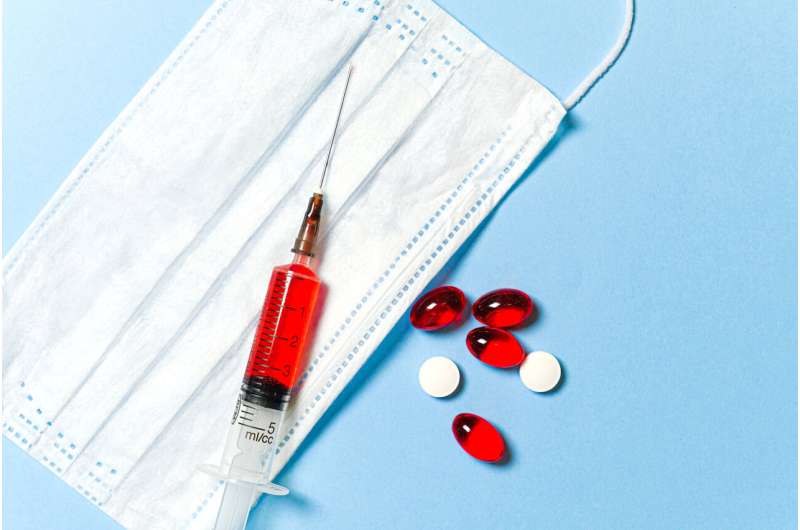Higher risk of blood clots in COVID-19 outpatients, largely reduced after vaccination

Researchers at NDORMS have studied the association between ambulatory COVID-19 and short-term risk of venal thrombosis and the clinical and genetic risk factors predisposing them to developing post–COVID-19 thrombosis.
Ambulatory COVID-19 patients (those diagnosed as outpatients) face an elevated risk of venal thrombosis (blood clot in a vein) than the general population not affected by COVID-19, according to a new NDORMS study. But the risk was greatly reduced in fully vaccinated people with breakthrough infection.
Published in JAMA Internal Medicine the retrospective, population-based cohort study examined records of more than 400,000 participants from the U.K. Biobank. 18,818 were infected with SARS-CoV-2 identified by a positive PCR test in community settings, and these were matched against 93,179 uninfected participants according to age, gender and a series of clinical features.
Frank Xie, lead author, DPhil student and research assistant in pharmaco-epidemiology at NDORMS said, "Numerous hospital-based studies have demonstrated VTE in patients with severe COVID-19 who have been admitted for treatment. This was one of the first studies into ambulatory patients with the virus, and we've found that there is a substantially increased risk of VTE among this cohort of middle age and older patients."
Other clinical risk factors include older age, being male, and obesity. The team also identified genetic factors that predisposed patients to VTE. Factor V Leiden thrombophilia carriers (approximately 4% of the population) had an additional double risk of post–COVID-19 VTE compared with noncarriers, which was equivalent to the excess risk associated with an increase of 10 years of age.
"We did, however, find that the risk was significantly decreased for individuals who had been fully (two-dose) vaccinated," said Frank. "Reinforcing the need for vaccinations, these findings may help to turn the tide of vaccine hesitancy and restrictions on their use. It could also help healthcare providers re-evaluate how they attentively prioritize treatments such as prophylaxis for milder ambulatory COVID-19 patients to mitigate the risks of VTE."
More information: JunQing Xie et al, Clinical and Genetic Risk Factors for Acute Incident Venous Thromboembolism in Ambulatory Patients With COVID-19, JAMA Internal Medicine (2022). DOI: 10.1001/jamainternmed.2022.3858





















